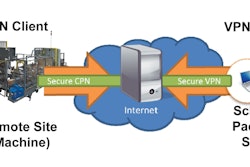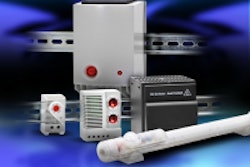The Automation Conference, held in Chicago May 22-23, provided a golden opportunity for Nestle’s Bryan Griffen to deliver an update on recent initiatives of the OMAC Packaging Workgroup. Griffen, who is the OPW chairman, was one of the keynote speakers at the conference, which is produced by Automation World and Packaging World, both publications of Summit Media Group.
In Griffen’s opening remarks, he reminded his audience just why PackML has gotten Nestle’s attention the way it has. “We like three things about Pack ML. It defines a machine’s state--holding, running, executing, stopping, aborting—and it makes that consistent from machine to machine. It also defines machine modes—maintenance, jog, cleanout, operating, etc. And third, with PackTags it standardizes the way data is moved outside the machine; the PackTags carry information about the condition of the machine in a very specific format that lets the machine next to it pick up that info and know what it means.”
Griffen then went on to describe recent Nestle and OPW machine control initiatives:
-
Recently, we have come up with an HMI standardization. Why? Because Nestle has more than 200,000 HMIs and over 70,000 people touching them in our plants. How do you put together a coherent training program when that is the case? So we put together a very simple HMI template to bring some consistency to where the top bar with its navigation tools is located, or where the alarm and events section is. The key is that we’ve standardized on things like green means start--always. Stop is red--always. And these HMI elements will always be found in one place and one place only for every machine’s HMI. We hope to prove this concept this year by implementing it in one line. Then we plan to pass the template along to the OPW. Again, this is not how Nestle differentiates itself from the competition. It’s something everyone should have. We’ve shown it to a few machine builders and they think it’s great, not because the template is so special, but simply because it’s Nestle telling a packaging machinery OEM what we want from them. In the past we never specified like this. The OEMs have always done their own thing, and their own thing always looks a little different than the next guy’s. As the HMI template becomes part of the PackML spec model, it will move into the mainstream and people will come to expect an HMI to look like this.
-
Another key step we are taking this year and next in our journey toward a more effective packaging solution is in the area of diagnostics. On the process side of our business, when there’s a breakdown our technicians are perfectly capable of getting into the PLC, troubleshooting, making changes to the PLC if required, and changing instrumentation if required. It’s easier to do this on the process side because we designed all of this control in the first place. We own it. On the packaging machinery side, we’re not so lucky. But as we reach faster and faster speeds, I want my technicians to stay out of the packaging machine’s cabinet. They’re not trained for high-speed motion. If they get into the PLC and change a cam profile, they didn’t just shut something down. They might have destroyed the machine. Because speed and motion profiles that are fundamental to packaging equipment are not what they’re trained to understand. They’re trained on process. So going forward we want the PLCs locked. But if they’re locked, we’ll need better diagnostics on the screens, because our guys still have to be able to figure out what’s going on, what went wrong, and what needs to be changed, repaired, or replaced to get the machine back up and running if it goes down. Our premise will be that if the machine was running properly yesterday, the software code didn’t magically change itself. It’s still good code. Something else must have gone wrong, so show me. So we’re going to be working with our key machine builders, especially on the high-speed side, to develop new diagnostic tools within their equipment allowing my techs to fully troubleshoot the machine without ever connecting to the PLC. If it’s something where the code needs to change, then we’ll need the help of the OEM. After all, it’s their machine.


























